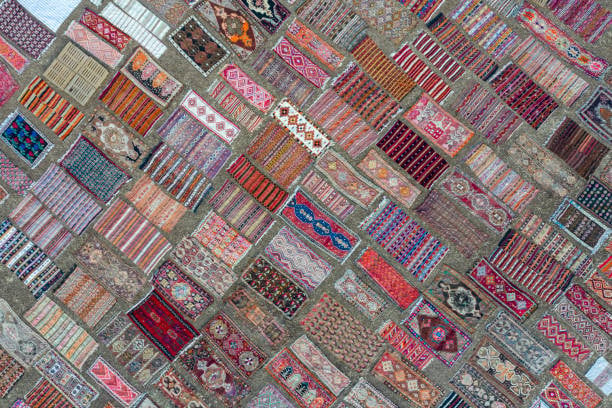Table of Contents

Understanding the Basics of Woven Fabrics
Woven fabrics are an integral part of our everyday lives, from the clothes we wear to the furnishings in our homes. But have you ever wondered what fabric is woven and how it is created? In this article, we will delve into the world of woven fabrics, exploring their types, production methods, and properties.
The Process of Weaving
Weaving is a technique that involves interlacing two sets of yarns, known as the warp and weft, to create a fabric. The warp yarns run vertically while the weft yarns run horizontally, perpendicular to the warp. This interlacing of yarns forms the characteristic grid-like pattern of woven fabrics.
Types of Woven Fabrics
There is a wide variety of woven fabrics available, each with its own unique characteristics and uses. Some common types include:
1. Plain Weave
Plain weave is the most basic and commonly used weave. It features a simple over-under pattern, with each weft yarn passing alternately over and under each warp yarn. This weave creates a strong and durable fabric, such as denim.
2. Twill Weave
Twill weave is characterized by a diagonal pattern created by passing the weft yarn over multiple warp yarns before going under. This weave is known for its durability and drapability, making it suitable for garments like jeans and chinos.
3. Satin Weave
Satin weave is characterized by long floats on the fabric surface, giving it a smooth and lustrous appearance. The weft yarn passes over several warp yarns before going under, creating a luxurious fabric often used for evening gowns and bedding.
4. Jacquard Weave
Jacquard weave is a complex weave that allows for intricate patterns and designs. It is created using a jacquard loom, which controls each individual warp yarn. This weave is commonly used for upholstery fabrics and brocades.
The Properties of Woven Fabrics
Woven fabrics possess several properties that make them highly desirable for various applications. Some key properties include:
1. Strength and Durability
Due to the interlacing of yarns, woven fabrics are inherently strong and durable. They can withstand regular wear and tear, making them suitable for everyday clothing and household textiles.
2. Breathability
Woven fabrics often have a more open structure compared to knitted fabrics, allowing for better air circulation and breathability. This makes them ideal for warm weather clothing and bedding.
3. Shape Retention
Woven fabrics have excellent shape retention, meaning they can maintain their original form even after repeated use and washing. This property is particularly important for tailored garments and upholstery fabrics.
4. Versatility
Woven fabrics come in a wide range of fibers, weights, and finishes, making them versatile for various applications. They can be lightweight for summer dresses or heavy-duty for upholstery.
Conclusion
Understanding what fabric is woven provides insight into the vast world of textiles. From the basic plain weave to the intricate jacquard weave, woven fabrics offer a multitude of options for clothing, furnishings, and more. Their strength, durability, breathability, and versatility make them a popular choice among designers and consumers alike.
